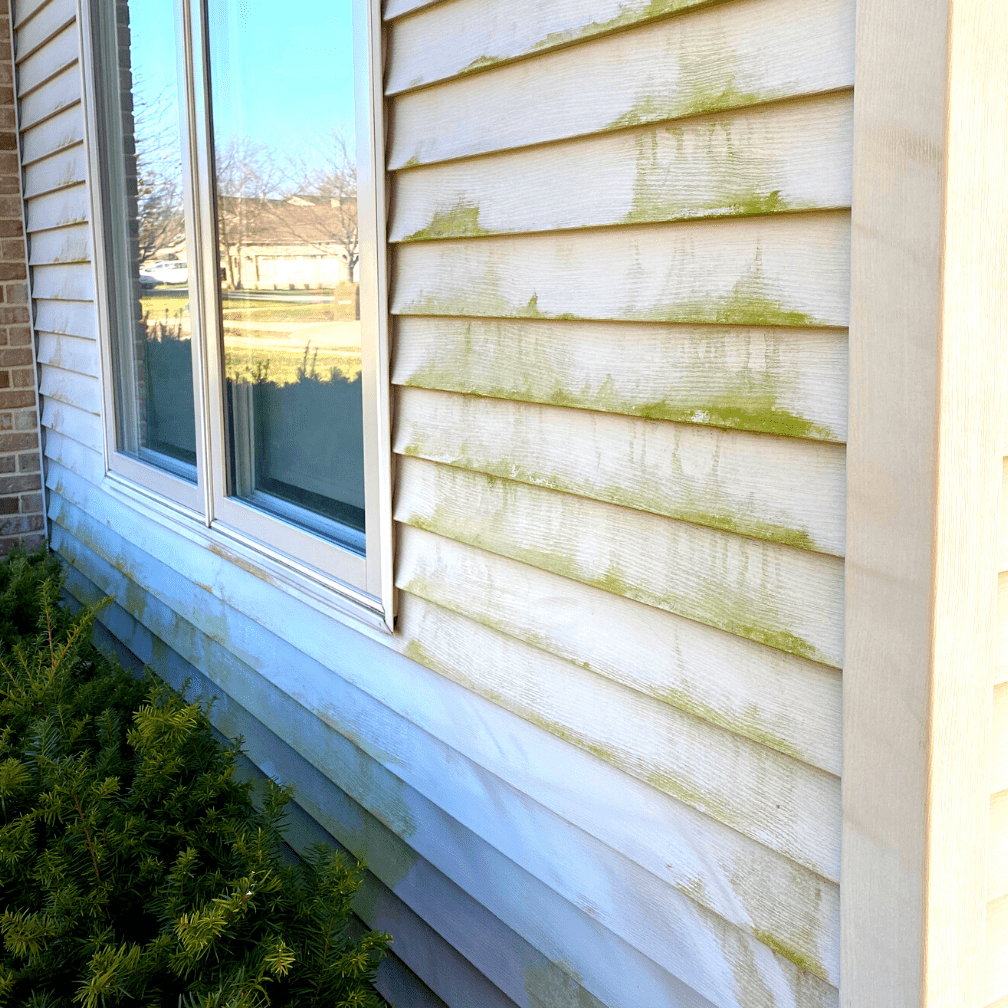A problem here in the Midwest (and other parts of the United States) is green algae growing on your vinyl siding. This often happens in the spring and winter months – and luckily, it’s something that you can easily address with two very common household items: water and vinegar. No pressure washer necessary!
What you’ll need:
- Bristle brush
- Water & vinegar solution
- Gloves & eye protection
- Hose
- Bucket/ Sprayer
DISCLAIMER: This blog contains affiliate links, which means that if you click on one of the product links, I’ll receive a small commission.
Rather watch than read? Check out this 8-minute video.
First, what is algae?
To get rid of algae, it’s helpful to know a little bit more about it. According to LiveScience, algae is “a diverse group of aquatic organisms that have the ability to conduct photosynthesis.” It’s common in areas like ponds, pools, and aquariums. But it also can be seen on vinyl siding when there’s excessive rain, humidity, and other conditions that allow algae to thrive. For example, if one side of your house gets less sunlight and is shaded by plants/greenery, there’s a good chance it’s a potential hub for algae and mildew.
Algae can also be caused by moisture from a broken pipe, clogged gutter, or some other maintenance issue. So you’ll want to address these environmental/maintenance areas to fix your problem permanently.
How to get rid of algae on vinyl siding (without a pressure washer) – 3 steps
1. Clean up the area
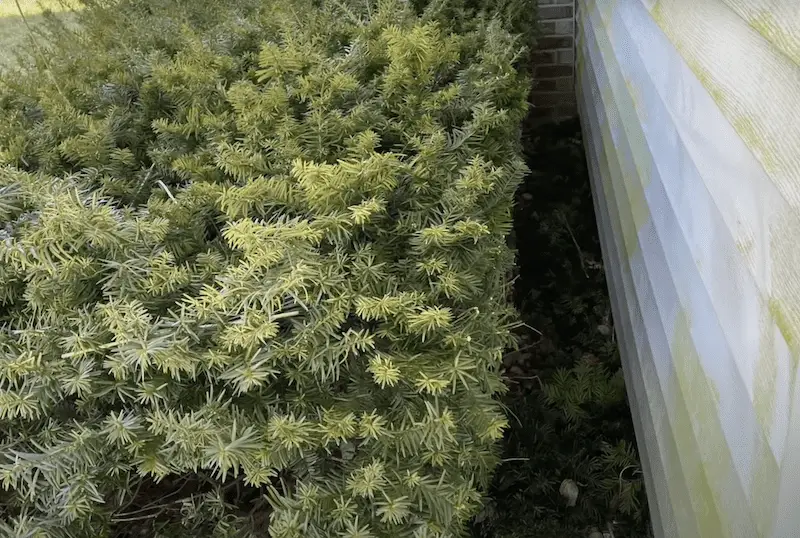
To reduce the chances of algae coming back, you’ll want to address any issues with the environment. For example, trim the trees, bushes, and vegetation away from the vinyl siding (as seen above). And look for any maintenance issues like clogged gutters, broken pipes, etc.
While scrubbing the algae will help temporarily, you’ll want to address any area with the potential to hold moisture in, like dirt and pollen, which are needed for algae to grow.
2. Mix your algae removal solution & gather materials
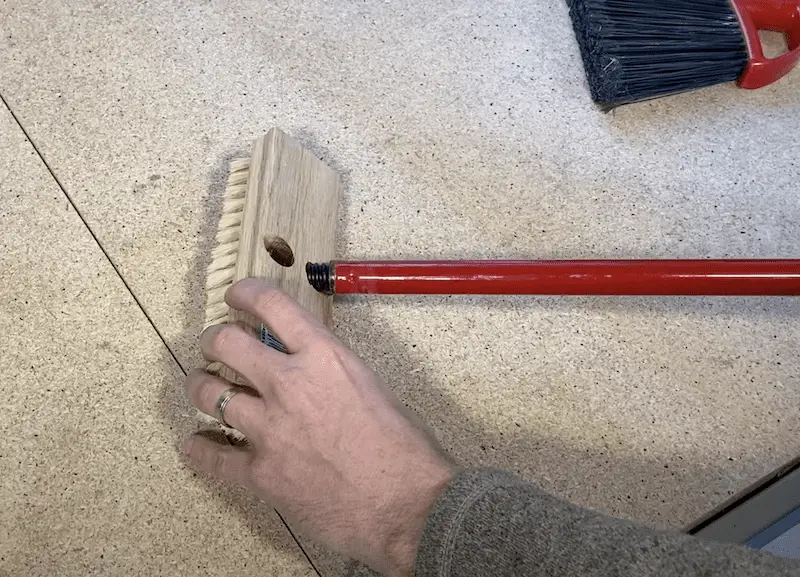
I’m going to use a soft and medium bristle brush to get a little bit more reach and screw in a common broomstick into the brush. This will help reach a little higher on some of the spots of the vinyl siding.
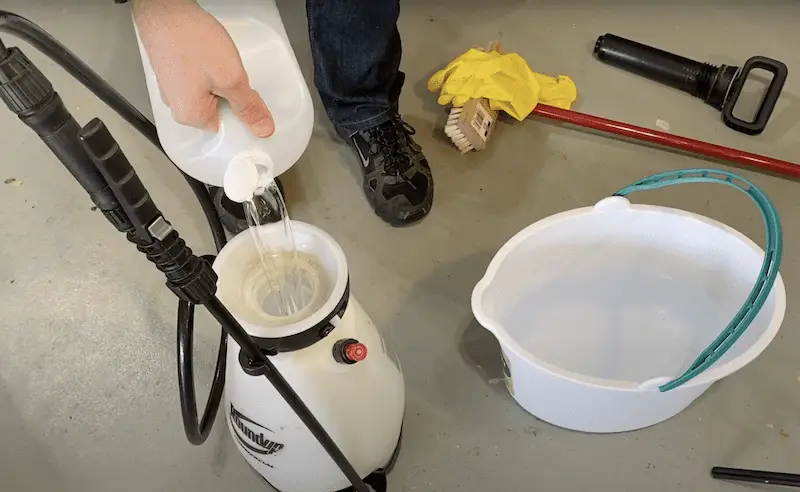
The algae removal solution I use is a mixture of 30% vinegar and 70% water. Specifically, I use a two-gallon sprayer with 2/3 of the gallon with vinegar and 1 1/3 with water. You do not need to use a sprayer, you could also use a bucket and dip your brush into it. But I prefer the sprayer to help me get a little more coverage.
Pro tip: Since you’re dealing with vinegar — even though it’s diluted down — don’t forget to use gloves. This will help your hands to not dry out. I also recommend wearing goggles/glasses so don’t get vinegar in your eyes, especially if you’re getting rid of a lot of algae.
3. Start spraying & scrubbing
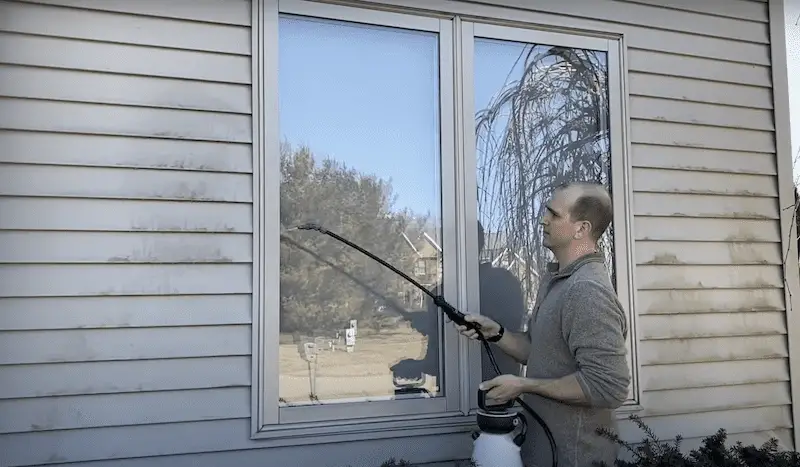
First, spray down all the different patches of algae with a generous portion of the mixture.
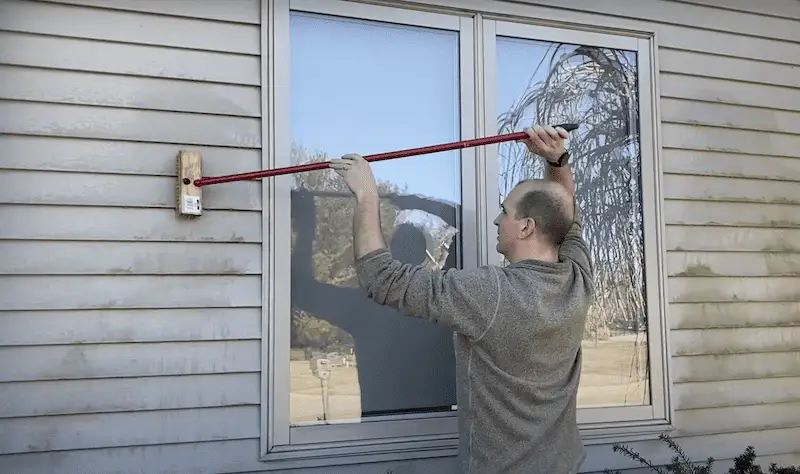
Once you get nice coverage, grab the brush and start working side to side. I usually scrub for two rounds back and forth.
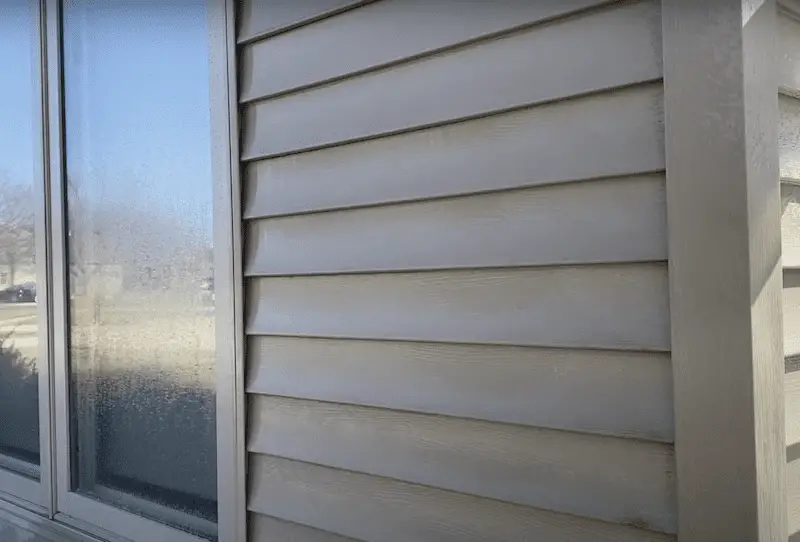
Once everything is taken off, make sure you have a hose and/or some type of spray nozzle. Go over it with water so you can wash the algae off your siding.
As soon as you’re done, look for any spots that you didn’t get good coverage on. Spray it down again and you’ll see it all come off.
The wrap up
There’s not much to it! This is a great project to take on during a nice day when you start to see the algae build-up on your vinyl siding. But again, I want to reiterate that cutting the bushes and/or addressing any environmental causes of the algae is crucial. So don’t overlook that step! Spraying and scrubbing will help get rid of the algae, but it won’t necessarily stop it from coming back.
If you get ahead of the algae, it’s not too in-depth of a project. But if you wait until it really spreads, then it’ll turn into a larger job and it’ll probably be easier to get a pressure washer.
Project Update
24 Months Later
So it has been 2 years since I cleaned my siding and I am happy to report I have not had to clean my siding again! I think a key part of this is maintaining a gap between the bushes and my house. Once the vegetation starts to touch the siding especially on the north side of the house this can promote the growth of algae and increase the frequency of your cleaning.
See the top 10 tools I recommend for new homeowners and how to repair damaged deck boards.
